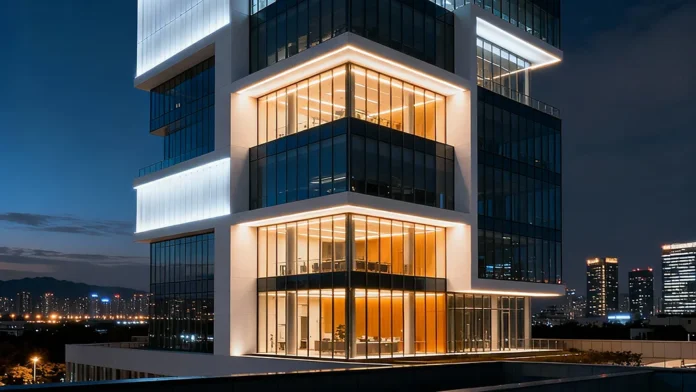How Lighting Shapes Architectural Identity in Modern Buildings
The relationship between light and architecture transcends mere functionality, evolving into a sophisticated dialogue that defines the very essence of modern structures. Architectural lighting in modern buildings has emerged as a fundamental design element that not only illuminates spaces but crafts experiences, tells stories, and establishes lasting impressions that resonate with occupants and observers alike.
The Evolution of Light as Architectural Language
Contemporary architecture has witnessed a profound transformation in how designers perceive and integrate lighting solutions. Where traditional buildings relied primarily on natural daylight supplemented by basic artificial illumination, today’s architectural lighting for modern buildings encompasses a comprehensive design philosophy that considers light as both medium and message.
The integration of lighting systems during the conceptual design phase allows architects to sculpt spaces with unprecedented precision. Modern buildings now emerge from design studios with lighting strategies that complement structural elements, enhance spatial relationships, and create dynamic environments that respond to both functional requirements and emotional needs.
Defining Character Through Illuminated Form
The character of a building emerges through the strategic application of lighting principles that highlight architectural features while creating visual hierarchies. Architectural lighting modern buildings employ sophisticated techniques that transform static structures into dynamic compositions that evolve throughout the day and across seasons.
Contemporary commercial towers demonstrate this principle through their use of gradient lighting systems that emphasize vertical proportions while creating visual anchors at key levels. The interplay between illuminated and shadowed surfaces generates depth and texture that would otherwise remain hidden, revealing the architect’s vision in its full complexity.
Residential developments have similarly embraced lighting as a character-defining element, with projects featuring integrated LED strips that outline architectural forms and create distinctive nighttime silhouettes. These installations transform neighborhoods into illuminated landscapes where individual buildings contribute to a larger urban narrative.
Creating Atmospheric Experiences
The atmospheric qualities of modern buildings depend significantly on lighting design decisions that influence how occupants perceive and interact with spaces. Architectural lighting systems create environments that support specific activities while establishing emotional connections between people and places.
Office environments demonstrate this principle through circadian lighting systems that adjust color temperature and intensity throughout the day. These installations not only support productivity and wellbeing but also create spaces that feel alive and responsive to human needs. The resulting environments foster engagement and satisfaction that extends beyond basic functional requirements.
Cultural institutions showcase another dimension of atmospheric lighting design, where illumination serves both preservation and presentation needs. Museums and galleries employ sophisticated lighting systems that protect sensitive artworks while creating immersive experiences that enhance visitor engagement and understanding.
Integration with Architectural Elements
Modern building design increasingly treats lighting as an integral component of architectural systems rather than an afterthought. This integration manifests through various approaches that blur the boundaries between structure and illumination.
Façade-integrated lighting systems represent one of the most visible expressions of this integration, where LED elements become part of the building envelope itself. These installations create dynamic exterior surfaces that can display information, celebrate events, or simply provide architectural accent lighting that enhances the building’s presence in its urban context.
Interior spaces demonstrate similar integration through architectural details that conceal lighting systems while directing their output precisely where needed. Cove lighting, integrated millwork illumination, and structural element lighting create seamless environments where light appears to emerge naturally from the architecture itself.
Technology’s Role in Lighting Innovation
The technological revolution in lighting has enabled architects to realize previously impossible design visions while addressing sustainability concerns that define contemporary practice. LED technology has fundamentally altered the relationship between lighting and architecture by providing tools that are both energy-efficient and design-flexible.
Smart lighting systems now allow buildings to respond dynamically to occupancy patterns, weather conditions, and programmatic requirements. These installations create environments that optimize energy consumption while maintaining high-quality illumination that supports the building’s intended use patterns.
Color-changing capabilities have opened new possibilities for architectural expression, enabling buildings to transform their appearance for special events, seasonal celebrations, or branding purposes. These systems create opportunities for buildings to engage with their communities in ways that extend beyond their primary functions.
Sustainable Lighting Strategies
Environmental responsibility has become a driving force in architectural lighting design, with professionals seeking solutions that minimize energy consumption while maximizing design impact. Modern sustainable lighting strategies address both operational efficiency and environmental stewardship through careful system selection and design optimization.
Daylight harvesting systems represent a sophisticated approach to sustainable lighting that reduces artificial illumination requirements while maintaining consistent light levels throughout interior spaces. These installations use sensors and automated controls to adjust artificial lighting based on available natural light, creating environments that feel naturally illuminated while minimizing energy consumption.
The specification of high-efficiency LED systems has become standard practice in modern building design, with professionals selecting products that provide excellent color rendering and longevity while consuming minimal energy. These choices support both environmental goals and long-term operational cost management.
Human-Centered Design Considerations
The recognition that lighting profoundly affects human health and performance has influenced architectural lighting design toward more nuanced approaches that consider physiological and psychological impacts. Modern buildings increasingly incorporate lighting systems that support circadian rhythms while creating environments that feel welcoming and supportive.
Biophilic lighting design represents an emerging approach that seeks to replicate the natural lighting conditions that humans evolved to experience. These systems provide dynamic illumination that changes throughout the day in ways that support natural biological processes while creating interior environments that feel connected to the outdoor world.
The consideration of visual comfort has become increasingly sophisticated, with designers employing advanced calculation methods to minimize glare while ensuring adequate illumination for specific tasks. These efforts create environments where occupants can perform at their best without experiencing the visual fatigue that often accompanies poorly designed lighting installations.
Cultural and Contextual Sensitivity
Architectural lighting design must respond to cultural expectations and contextual requirements that vary significantly across different regions and building types. Modern projects increasingly demonstrate sensitivity to local traditions and environmental conditions while pushing forward innovative approaches to illumination design.
Urban lighting strategies consider the broader cityscape context, ensuring that individual buildings contribute positively to the overall nighttime character of their neighborhoods. These considerations balance the desire for distinctive architectural expression with respect for existing urban fabric and community values.
Historic preservation projects showcase another dimension of contextual sensitivity, where modern lighting technology enables the illumination of heritage buildings in ways that enhance their architectural qualities without compromising their historical integrity. These projects demonstrate how contemporary lighting design can serve preservation goals while creating new opportunities for public engagement with cultural resources.
Future Directions and Emerging Trends
The future of architectural lighting modern buildings will likely be shaped by advancing technologies that provide even greater design flexibility while addressing sustainability concerns more effectively. Emerging trends suggest increasing integration between lighting systems and building information systems that will enable more responsive and efficient building operations.
Artificial intelligence applications in lighting control promise to create environments that learn from occupant behavior patterns and adjust automatically to optimize both comfort and energy efficiency. These systems will enable buildings to become more responsive to their users while reducing the operational burden on facility management teams.
The development of new materials and manufacturing techniques will continue to expand the possibilities for integrating lighting into architectural systems, potentially leading to building surfaces that are themselves sources of illumination. These innovations will further blur the boundaries between structure and lighting while opening new possibilities for architectural expression.
The relationship between light and architecture will continue to evolve as designers, technologists, and building users develop increasingly sophisticated expectations for illuminated environments. The most successful projects will be those that balance technical innovation with deep understanding of human needs and environmental responsibility, creating buildings that serve as exemplars of thoughtful design integration that enhances both individual experience and community wellbeing.































